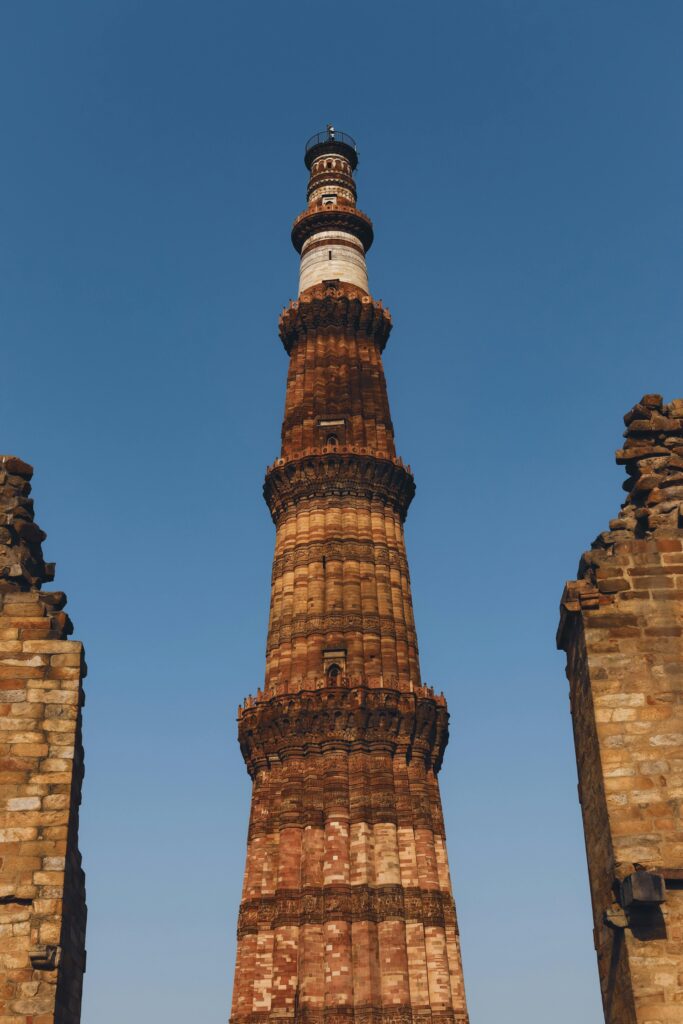Objective: To provide clear, accurate, and student-friendly solved questions and answers from the ICSE Class 7 chapter Social and Cultural Changes, helping students learn faster and score better.
History is not just about kings and battles—it’s also about the way people lived, thought, dressed, and celebrated their culture. The chapter Social and Cultural Changes opens a fascinating window into the evolving traditions and lifestyles of people over time. But remembering all those details can be tough, especially when exams are near.
That’s why this blogpost brings you a complete set of well-crafted question and answers based on the ICSE Class 7 syllabus. Written in easy language and structured for quick understanding, these answers will help you revise faster, grasp key points better, and walk into your exams with more confidence. Let’s make learning history simple and enjoyable!
Answer the following question on Social and Cultural Changes:
1. What were the four groups in society?
During medieval India, society was divided into four main groups:
- Brahmins (priests and scholars)
- Kshatriyas (warriors and rulers)
- Vaishyas (traders and merchants)
- Shudras (laborers and service providers)
This social structure was deeply influenced by the caste system and religious beliefs.
2. What is meant by the Bhakti Movement? Name any four Bhakti saints.
The Bhakti Movement was a spiritual reform movement in medieval India that emphasized devotion (bhakti) to a personal god over rituals and caste distinctions. It promoted equality and love for all.
Four prominent Bhakti saints were:
- Ramananda
- Kabir
- Mirabai
- Tulsidas
3. Who was Chaitanya Mahaprabhu? What were his main teachings?
Chaitanya Mahaprabhu was a 15th-century saint and the key figure in the Vaishnavism Bhakti Movement. He spread the worship of Lord Krishna through Harinam Sankirtan (chanting the holy names).
His main teachings included:
- Devotion to Lord Krishna as the supreme god
- Promotion of love and unity among people
- Rejection of caste barriers in spiritual life
4. What were the main teachings of Kabir?
Kabir, a 15th-century saint, preached spiritual wisdom beyond religious divisions. His teachings emphasized:
- Worship of one formless God (Nirgun Bhakti)
- Rejection of idol worship and caste discrimination
- Importance of truth, humility, and devotion
- Unity of Hindus and Muslims
5. Who was Guru Nanak? What were his main teachings?
Guru Nanak (1469–1539) was the founder of Sikhism and the first Sikh Guru.
His key teachings included:
- Ek Onkar – Belief in one God
- Equality of all people, rejecting caste and religious discrimination
- Honest living and selfless service (Seva)
- Kirat Karo, Vand Chhako, Naam Japo (Work hard, share with others, and remember God)
6. Who were the Sufi saints? How did they bring Hindus and Muslims together?
Sufi saints were Islamic mystics who spread the message of love, tolerance, and devotion to God.
They united Hindus and Muslims by:
- Promoting spiritual devotion over rituals
- Preaching equality and brotherhood
- Encouraging a simple lifestyle and charity
- Using local languages to communicate their teachings
7. Write briefly the effects of the Bhakti and Sufi movements.
The Bhakti and Sufi movements brought major social and religious changes:
- Promoted religious harmony between Hindus and Muslims
- Reduced caste discrimination and encouraged social equality
- Encouraged the use of regional languages in religious teachings
- Inspired Indian literature, music, and art
8. In what way is our lifestyle the same today as it developed during the period of the Delhi Sultanate and the rule of the Mughals?
Many aspects of our modern lifestyle have roots in the Delhi Sultanate and Mughal era:
- Indian cuisine (Mughlai food, biryani, kebabs)
- Architectural styles (Taj Mahal, Red Fort)
- Traditional clothing (salwar kameez, sherwani)
- Music and dance forms (Qawwali, Kathak)
- Language development (Persian, Urdu, and Hindi influences)
9. How was language and literature enhanced during this period?
The medieval era saw the growth of Indian literature and languages:
- Persian became the court language under the Delhi Sultanate and Mughals
- Urdu evolved as a mix of Persian, Arabic, and Hindi
- Regional literature flourished (Tulsidas wrote Ramcharitmanas in Awadhi, Mirabai composed devotional songs)
- Printing of books and the spread of education increased literary awareness
10. Why did the Buddhists flee to Nepal and Tibet?
Buddhists fled to Nepal and Tibet due to:
- Decline of Buddhism in India after the Islamic invasions
- Destruction of Buddhist monasteries like Nalanda by invaders
- Rise of Hindu and Islamic influence in India
- Tibetan rulers promoting Buddhism, providing a safe refuge
11. When and why did the Sikhs become a political force?
The Sikhs became a political force in the 17th century under Guru Hargobind and Guru Gobind Singh.
Reasons for their rise:
- Persecution by the Mughal rulers (Guru Arjan and Guru Tegh Bahadur were executed)
- Formation of the Khalsa in 1699 to defend Sikhism
- Sikhs fought against Mughal oppression and later against the British
- Established sovereignty under Maharaja Ranjit Singh in the 19th century
Look at the essay on My Favourite Subject English
Look at the study guide on The Egyptian Civilization
B: Fill in the Blanks
- The followers of Kabir were known as Kabirpanthis.
- The famous poet who introduced the Qawwali form of singing was Amir Khusrau.
- The birthplace of Guru Nanak is Talwandi in Punjab (now in Pakistan).
- The Tomb of Khwaja Moin Chishti is situated in Ajmer.
- The Rajput princess who was a great devotee of Lord Krishna was Mirabai.
C: Match the Following
| A | B |
| Sant Jananeshwar | Wrote Bhagwat Geeta in Marathi |
| Chaitanya | Spread Bhakti movement in Bengal |
| Adi Granth | The book in which the teachings of Guru Nanak are written in the form of verses |
| Amritsar | Also known as the “Pool of Immortal Nectar” |
| Mukaddam | Top of the village administration |
D: True or False
- The Sufi movement was an offshoot of Hinduism. False (It was a mystical branch of Islam).
- Hindustani classical music developed during the Delhi Sultanate. True.
- Akbar built colleges at Fatehpur Sikri. True.
- There was a provision for higher education for the masses in Mughal India. False (Higher education was mainly for the elite and scholars).
- India exported textiles, handicrafts, and spices. True.


